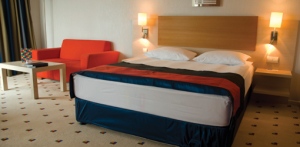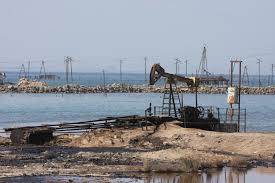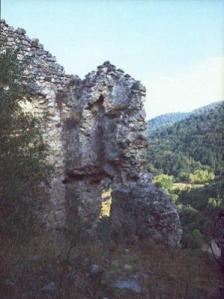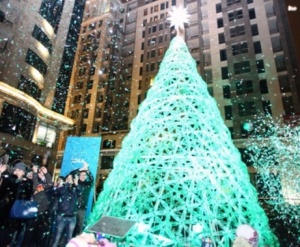Since a few years ago Azerbaijan has focused its efforts on developing local tourism sector, hotels in the country have sprung up like mushrooms. Today in Baku you will be spoiled for choice with a wide variety of sleepover places starting from internationally renowned brands to independent boutique hotels. In this post we will give you an idea about some of the best options, depending on your budget.
HIGH END
Fairmont – situated in one of the Flame Towers, the symbol of modern Baku. From the rooms you will get some of the best views of the capital. It’s location provides a good starting point for the city tour but if you’re planning to visit some of the local clubs or restaurants you’ll have to take a cab. In the hotel you will also find the only French restaurant in the city and a spa.

Fairmont Hotel Flame Towers
Four Seasons – conveniently situated just on the outskirts of Icheri Sheher. This classically inspired yet modern hotel overlooks the Caspian Sea and the Boulevard, and is within a walking distance from most of Baku’s ”must-see”. Apart from an Italian restaurant and Bentley’s whiskey and cigar bar, there’s also arguably the best seafood restaurant in the city (Kaspia) and a luxury spa.

Four Seasons Hotel Source: Forbes
JW Marriott Absheron – the hotel is overlooking the massive Azadliq Square and Dom Soviet. JW Marriott Absheron is situated in the modern, futuristic part of the city, about 30mins walk from the Old Town and other tourist attractions. Apart from the luxury spa, there are as well two restaurants – Oronero and Fireworks. The first one serves Italian food and has spacious outdoor dining terrace, while the other offers an exciting mix of Azerbaijani, Turkish, Iranian and Punjabi food.

Source: Panoramio
Hilton Baku – centrally located, overlooking the Boulevard and the Caspian Sea, close to all tourist attractions and the shopping area. Apart from the open terrace Sky Grill located on the 24th floor and Cilantro, a restaurant serving Middle Eastern and Mediterranean inspired food, there is also Baku’s only 360° Bar offering incredible views over the sea and the city.

Hilton 360 Bar
MID RANGE
Park Inn – located next to Hilton, close to the cultural sites and business center. Very popular with corporate travellers. The top floor is occupied by Eleven, one of the most popular clubs in the city. Situated in the vicinity of bars, restaurants and the shopping area.

Park Inn. Source: Hg2
Central Park – located about 15mins walk from the Fountain Square and the Old Town, very close to the spacious, recently created Winter Park and the remains of the last century’ s oil barons’ mansions. It allows you to experience a different side of Baku without taking you away from the center. In the vicinity of bars and restaurants.

Central Park Hotel
BOUTIQUE
Shah Palace – a charming boutique hotel situated in Icheri Sheher, just by the Shamakhi Gate (Double Gate), provides an excellent starting point for the city tour. Its atmospheric interior combines the elements of classical, Azerbaijani architecture with pieces of national artwork. Apart from the outdoor terrace restaurant, there is also a wine bar serving some of the finest local and international wines.

Shah Palace Hotel
Atropat – situated in the heart of Icheri Sheher; perfect starting point for the city sightseeing. Atropat offers an open air roof dining terrace with 24hr service.

Atropat Hotel. Source: destinia
Sultan Inn – located in the center of Icheri Sheher. In their own words ”the hotel blends harmoniously with the surrounding reality and is conveniently positioned close to famous historic landmarks reached by winding old streets with mosques, carpet and handicraft shops”. The hotel offers as well an excellent open air roof terrace restaurant serving good quality Azerbaijani food.

Sultan Inn hotel
BUDGET
Noah’s Ark – situated in Icheri Sheher, very close to tourist attractions and within a walking distance from popular bars and restaurants. Apart from the standard hotel rooms, there’s also an apartment available for rent that will accommodate up to 5 people (120 sq m). On the 5th floor, there’s also an Azerbaijani restaurant with 360′ city view.

Noah’s Ark Hotel
Altstad Hotel – a small hotel (8 rooms only) situated in Icheri Sheher, surrounded by main tourist attractions of the Old Town and within a walking distance to bars, restaurants, shops and museums.

Altstadt Hotel. Source: Lonely Planet
Caspian Hostel – a family-run hostel located in Icheri Sheher. Rooms available: an eight-bed dorm and a double-bed in a separate room. There is also a kitchen and separate bathroom with shower.

Caspian Hostel. Source: Lonely Planet
These are only some suggestions on where to stay in Baku. For more information please contact us and we will be happy to advise. In the next post we will prepare a list of the best places to stay when traveling around Azerbaijan.




































